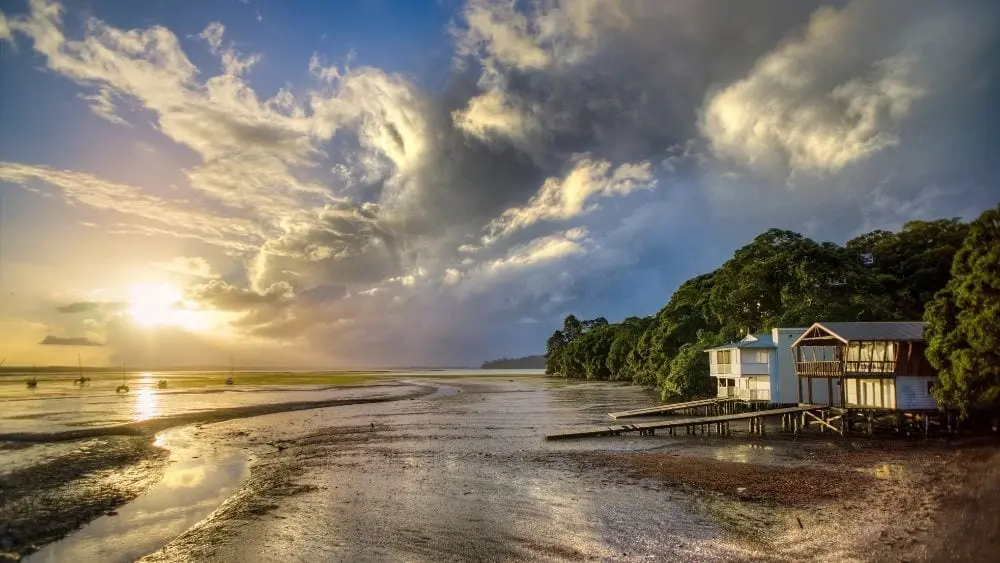
When late night comedians start joking about Fannie Mae and Freddie Mac, as they often did at the height of the housing market meltdown a decade ago, you know those two quasi-government agencies have reached the public consciousness.
Though they are now in conservatorship, Fannie and Freddie still keep the money flowing for home mortgages. They do so by purchasing loans made by private lenders, package them into securities and sell them to investors worldwide. By taking loans off the hands of lenders, they provide liquidity so lenders have more money to make more loans.
But there are two other lesser-known federal housing programs that soon-to-be home buyers should know about. One is Farmer Mac, a government-sponsored enterprise similar to Fannie and Freddie, and the other comes from the Department of Agriculture.
Both are aimed at folks buying houses in rural areas. But don’t let the term “rural” fool you. The locations they serve may be a lot closer to metropolitan areas than you might think. Consequently, they are worth a look-see.
Among Farmer Mac’s programs is one that targets so-called “gentlemen” or “hobby” farmers, or people who want to move to the country and do a little farming, either full-time or as a sideline. But don’t be thrown off by the term “farming,” either. In fact, there are no geographic restrictions.
At the same time, though, properties that qualify for these programs can’t be just houses on a large lot, or one that’s off in the woods somewhere. They have to be of some acreage. Indeed, if it is less than five acres, a minimum of $5,000 in annual gross sales of agriculture products must be documented. But there is no such requirement for properties larger than five acres.
What is Farmer Mac?
Known more formally as the Federal Agricultural Mortgage Corp. – Fannie Mae and Freddie Mac used to be the Federal National Mortgage Corp. and the Federal Home Loan Mortgage Corp., respectively – Farmer Mac was created by Congress in 1988 to build a secondary market for agriculture real estate and rural mortgages. Since then, it has become a key part of the agricultural credit markets.
Like its more well-known counterparts, Farmer Mac doesn’t make loans to borrowers. So you’ll have to find a lender who sells its loans to the GSE. To find some, visit FarmerMac.com.
To be eligible, you must be a U.S. citizen or permanently admitted for U.S. residency. Also, the house and land you want to buy must be a single-family detached residence or second home to support agricultural production. Financing of up to $12 million is available in most cases, but you can borrow up to $30 million on “high-value” properties of less than 1,000 acres.
A variety of loans are available, including both fixed-rate and adjustable-rate mortgages, with terms from seven to 30 years. For loans up to $5 million, the loan-to-value ratio cannot exceed 70 percent. If you need more than that to complete your deal, you’ll have to pony up 40 percent as the down payment.
Rural Housing Service Programs
For home buyers who yearn for the country but don’t want to be farmers, the Agriculture Department’s Rural Housing Service (RHS) offers a variety of loans, grants and loan guarantees to build, buy or improve both single-family and multi-family housing.
RHS Resources:
As part of his plan to reorganize the federal government, President Donald Trump had proposed moving RHS into the Department of Housing and Urban Development (HUD). But that never happened and it remains at the Department of Agriculture.
What Does “Rural” Mean?
The term “rural” is something on a misnomer. Generally, rural refers to places with a population of 35,000 or less. But by Rural Housing Service standards, for example, there are parts of Los Angeles County that are considered rural.
Under the RHS guaranteed loan program, lenders can make loans of up to 100 percent of the home’s value and Uncle Sam promises to guarantee 90 percent of the loan amount should the borrower default.
Guaranteed loans can be used to purchase new or existing houses as long as they are borrowers’ permanent residences and occupied by borrowers. In addition, closing costs and reasonable and customary expenses associated with the purchase may be included in the loan amount, resulting, in effect, a 105 percent mortgage.
There are limitations based on income and family size. But folks who have “moderate incomes” – up to 115 percent of the U.S. median income – qualify. The ceilings are extremely generous, too.
Here are a few examples:
- Austin Metro Area – Limits range from $83,250 for a one-person family to $109,000 for a family of eight.
- Denver Metro Area – Limits range from $103,350 to $136,400.
- Chicago (Cook County, IL) – The Limits range from $97,300 to $128,450.
Who Is Eligible for These Programs?
Under the Rural Housing Service’s “Section 502” direct loan program (PDF), low-and-moderate income borrowers are eligible for 100 percent mortgages. In other words, no money down. The adjusted incomes of applicants can be no greater than the low-income limit for their area, and they must be able to obtain financing from other sources.
If you can get a loan elsewhere, why pursue a 502 loan? One reason: The payback period is 33 years, and borrowers with very low incomes can stretch the loan out to 38 years to make the payments more affordable.
The income limits for the direct loan program are somewhat lower than on guaranteed loans. In Austin, for instance, the range is $40,550 for one-person households to $76,450 for families of eight. In Denver, it runs from $50,350 to $94,900, and in the Chicago region, it ranges from $47,400 to $89,350.

Lew Sichelman is a nationally syndicated housing and real estate columnist. He has covered the real estate beat for more than 50 years.
 Understanding Home Construction Loans
Understanding Home Construction Loans
Felicia Dickerson
My name is Felicia Dickerson I am writing to who it may concern I am looking to purchase a home first time home buyer I don’t know which way to go to purchase a home a single-family home just me and my husband passed away a year agoPlease contact me at 404-748-2281 thanks so much
Jamie Garcia
Hi Felicia,
Your first step is to look into first-time homebuyer assistance programs. You can do that here: https://www.newhomesource.com/learn/down-payment-assistance-programs/. You can get more info on our learning center here: https://www.newhomesource.com/learn/first-time-homebuyers/
You can find new homes in your area by going to newhomesource.com and searching for your city.